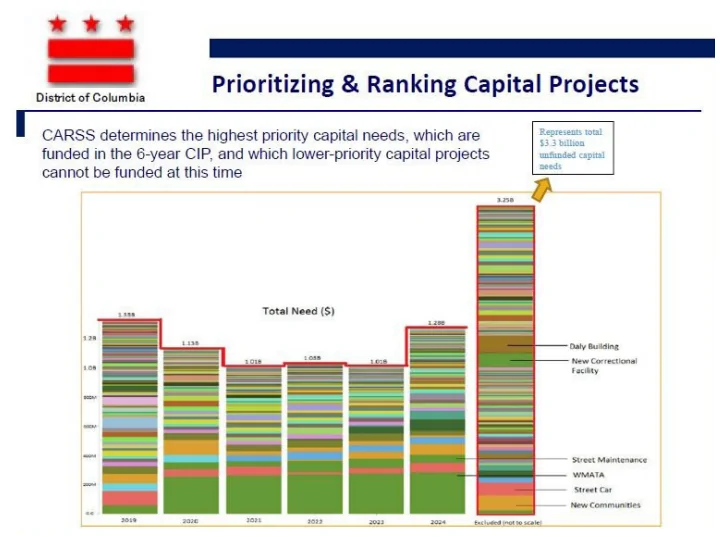U.S. bridges are not crumbling because we don’t know how to manage bridges. U.S. bridges are crumbling because leadership is challenged to deal with increasingly complex issues. In an ever-changing world with constantly evolving tools and processes, it is beneficial for leaders to keep in touch with each other and share best practices that can be replicated by others. The transparent nature of many government offices makes government executives the ideal leaders to share paths to success that others can follow.
There are several resources available to leaders throughout the U.S. who are seeking assistance, asset management best practices and want to understand and/or replicate the experiences of others. The Asset Leadership Network provides best practice materials and opportunities for collaborative learning sessions for leaders. Networks such as this are extremely important to building knowledge-sharing relationships amongst leaders across several organization types, as well as advocating the power of strong leadership for asset management.
The Network has a multi-year relationship with the District of Columbia government and has observed their successes in asset management. The benefits of strong leadership, asset management best practices and its impacts on asset management outcomes are evident in the experiences of the District of Columbia (DC) Government. The DC Office of the Chief Financial Officer took several pragmatic leadership steps that have led to asset management successes.
The following are some of the main ways asset management best practices were accomplished and its overarching benefits:
- Organized data from more than 80 departments to create a unified weekly report;
- Realized significant savings from a better understanding of assets;
- Customized capital planning reports;
- Planned deferred maintenance cost reductions for all asset categories;
- Improved bond ratings and dramatically reduced interest rates.
DC Government operates several public sector entities including a school district, a city, a county, a state and all government organizations, making their experience applicable to numerous types of organizations. DC enjoys a growing tax base, increased population, no pension deficits and enlightened legislation, putting them in a positive position and giving them the ability to focus on asset management. Regardless of the situation of your organization, there are benefits from acting on even one of the multiple strategies and tactics shared by the DC Government Office of the CFO.
DC Government CFO Jeffery DeWitt and his team, including Darryl Street, Senior Financial Policy Advisor and David Clark, Director, Capital Improvements Program, have been generous in presenting their story in order for other governments to learn from their experience.
They are currently experiencing both population and economic growth with a current approximate population of 700,000. A changing population offers various challenges as there are new strains on public infrastructure. Due to a lack of previous adequate long-term maintenance, billions of dollars were required for projects such as school building programs. The CFO Office focused on tackling the issue of long-term maintenance and on deferred maintenance for all of its departments.
CFO DeWitt has presented on the four key questions his office addressed – and the first step in answering those questions. They are:
- What assets do we have that need to be maintained?
In order to address this the CFO Office took on developing a comprehensive asset inventory/ registry in order to provide a holistic picture of all assets. - What is the quality of the assets we have?
Understanding the condition and potential risks associated with certain assets and their failure or breakdown is critical to a holistic asset management program. In order to understand this the Office underwent facility/ asset condition assessments. - How will we prioritize our capital needs?
Once there is an understanding of asset condition it is easier to understand the real maintenance needs of assets and therefore makes it easier to create a system to determine the most pressing needs. Therefore, the Office developed a system to evaluate, rank and prioritize asset maintenance. - How much funding is available to address capital needs and asset maintenance?
In order to accurately prioritize, there must be an overarching understanding of available funding. The Office sought to understand their full financial picture by listing outstanding debt, debt limits, cash, and federal and other sources of funding.
To address the answers to these questions, DeWitt came to the understanding that the Office needed a Capital Asset Replacement Scheduling System. The Capital Asset Replacement Scheduling System is an internally customized system that includes a policy, strategy and tactics for software and processes that roll up information from more than 80 departments for use in weekly reports and other planning documents. The policy was to have information available in a common format that allowed uniform data across all departments. The strategy included telling departments that they wouldn’t get funds if they didn’t make their information available to a central data warehouse in the commonly available format.
Tactically, the DC Government spent approximately $2 million over 2 years in order to assist departments. They needed to understand what information was important to measure and the best ways to make the information available. Beginning from many different starting points, using advanced software and web business processes, DC CFO DeWitt led the effort to improve each department. Based on the customized software and the resulting improvement to decision effectiveness, the DC Government’s bond rating was increased to AAA. More than $100 million is projected to be saved from the reduced bond interest payments over 10 years. More encouraging, that doesn’t include the asset-by-asset benefits realized when a comprehensive and transparent view of trusted data was established.
A changing population offers various challenges as there are new strains on public infrastructure. Due to a lack of previous adequate long-term maintenance, billions of dollars were required for projects such as school building programs. The CFO Office focused on tackling the issue of long-term maintenance and on deferred maintenance for all of its departments.
The system draws from many common data sources and from more than 80 departments including Office of Tax and Revenue and is processed using customized software.
The CFO office worked with departments to develop capital projects cost estimates unconstrained by funding, as well as costs for maintenance of all assets. There was work with various stakeholders to develop criteria to score, rank and prioritize all capital projects, including new projects and maintenance. They also factored in determined funding capacity by year under current constraints, debt capacity, local funds, federal funds and other sources. In addition, they identified capital projects where public-private partnerships and private sector funding could factor. With a clearer sense of real asset demands, the CFO developed a plan to fund those needs that cannot be funded in the current Capital Improvement Plan.

Figure 1. DC Government Office of the CFO customized software to roll up data from all departments, set spending priorities, establish conditions and explore options to determine the best way to meet unfunded needs by 2028.
The software system helped maintain asset management best practices; planning decisions related to inventories, conditions, assessment and how to maximize return on investment while looking at a comprehensive set of conditions. The resulting, data-driven Capital Investment Plans identify and quantify projects that cannot be funded immediately and provide options for when they can be. This assistance to long-range capital financial planning allows DC to address unmet capital needs.
With the ability of the software system to quickly calculate many options in a short period of time, it was possible to accurately plan the elimination of unmet deferred maintenance backlog by 2028. Part of this is possible because reduced bond interest payments frees up money for capital investment. CFO DeWitt also encouraged legislation that required increasingly more cash payments for products and services. The 2018 DC Budget Support Act further reduced interest payments over time and made more revenue available for reducing deferred
maintenance.
The combination of maximizing borrowing, increased cash funding per legislation and other funding allows DC to fund all identified capital needs by fiscal year 2028. This means all assets, including roads, bridges, schools and wheelchair lifts, can be funded to be in a state of good repair by then. This also means all assets will be scheduled for regular maintenance or replacement. Included in this projection is approximately $2.3 billion for the Washington Metropolitan Area Transit Authority by 2028.
In a release, CFO DeWitt stated, “With 100% of District-owned assets identified and the required funding committed in the budget plan, we have the most complete asset inventory and spending plan of any city or state in the country. The rating agencies and other outside experts have acknowledged the plan’s excellence.”
DC was able to leverage its Capital Asset Replacement Scheduling System to provide DC Mayor Muriel Bowser and the City Council a complete list of DC assets, the condition of those assets, a rationale for prioritizing capital needs and an informed and trustworthy funding plan that meets capital needs not accommodated immediately. By taking the lead in establishing a clear and understandable way to relate all assets to a financial mission, the DC Government Office of the CFO is able to provide best practice examples to other governments and organizations.
THE ASSET LEADERSHIP NETWORK is a non-profit trade organization based near Washington, D.C. It was created by U.S. delegates to ISO 55000. Asset Leadership Network CEO, Jim Dieter, was the chair of the U.S. delegation. Promoting and supporting government best practice sharing has been at the center of our mission and will continue to be a focus. You can learn more at www.AssetLeadership.net.



